Allegory of Wisdom (or prudence)
Oil painting on canvas
193 x 75 cm., In frame 199 x 82 cm.
The work is accompanied by critical study drawn up by prof. Emilio Negro (Bologna)
** All details relating to this painting can be displayed at the following - link -
The beautiful allegorical composition in question, which portrays a fair female figure with a double face, was originally conceived to be part of the representative furnishings of a large noble palace, and represents the personification of the cardinal virtue of wisdom (which corresponds to the prudence of theology Cattolica).
It is one of the four virtues that, together with the fortress, temperance and justice were classified by Plato in his Phaedrus, and then also adopted by the Christian religion, to enclose the main human virtues, equated to the pillars of a life dedicated to the good and to righteousness.
For the ancients, prudence was considered the most important virtue available to man and guidance of all the others (Auriga Virtutum): specifically it is the ability to discern, in all circumstances, our true good and to choose the appropriate means for be able to achieve it.
The iconographic representation, in our case, sees a woman with a statuary physicality with two faces like Giano who look - wisely - in more directions at the same time.
The first face, young and therefore allusive to the present, is aimed at a mirror, which expresses the need for the man to know himself and correct any defects before operating. The second face is that of an old man, and instead symbolizes past experience, without which the virtue of prudence is not acquired.
A snake, an ancient symbol of the time that is renewed cyclically and of eternity, thus alluding to the perennial need to exercise this virtue, is twenty.
The snake is likely a symbol of the temptation that wants to move away from the safest way, recalling the passage of the Gospel of Matteo “Here, I send you as sheep in the middle of the wolves; So be cautious as snakes and simple like doves "(Matteo, 10, 16).
The work, whose execution expresses elegance and power at the same time, is attributable to Giacomo Stella (Brescia 1545 - Rome 1630), a significant mannerist artist active between the sixteenth and seventeenth centuries, Brescia of origin but active especially in Rome, where yes He transferred at a young age, under the pontificates of Gregorio XIII (1572-1585) and the successors Sixtus V (1585-1590) and Urban VIII.
In the papal city he came into contact with Girolamo Muziano and Cesare Nebbia, active in many of the main projects of the late 16th century commissioned by the papacy. Among these, the most important is the fresco of one of the major religious works of the time, the construction and decoration of the Sistine Chapel in the Basilica of Santa Maria Maggiore (not to be confused with that of the Vatican), destined to become a funeral chapel for Pope Sixtus V
Painter of great temperament and equipped with a beautiful naturalist shot, the only hand of him must certainly be the great frescoes of the 'resurrection' and the 'creation of Eva', at the Santa Santa in Rome.
The painting is in good conservative condition.
The painting is sold together with a pleasant frame in golden wood.
Additional information:
The work is sold accompanied by certificate of authenticity and descriptive iconographic card.
We take care of and organize the transport of the works purchased, both for Italy and for foreign countries, through professional and insured carriers.
You can also see the painting in the Riva del Garda gallery, we will be happy to welcome you to show you our collection of works.
Contact us, without obligation, for any additional information.
Follow us also on:
https://www.instagram.com/galleriacastelbarco/?hl=it
https://www.facebook.com/galleriacastelbarco/














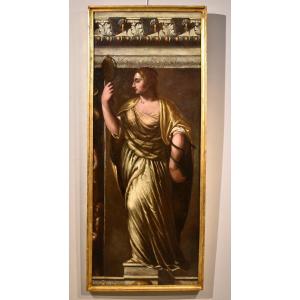














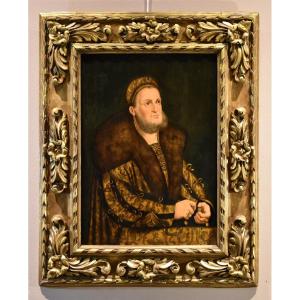











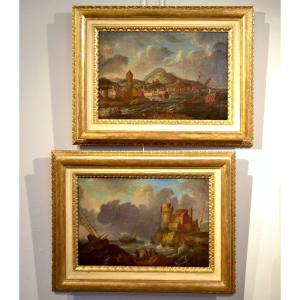
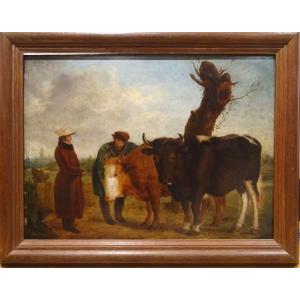
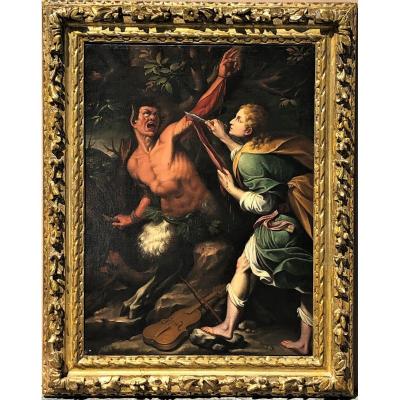






 Le Magazine de PROANTIC
Le Magazine de PROANTIC TRÉSORS Magazine
TRÉSORS Magazine Rivista Artiquariato
Rivista Artiquariato